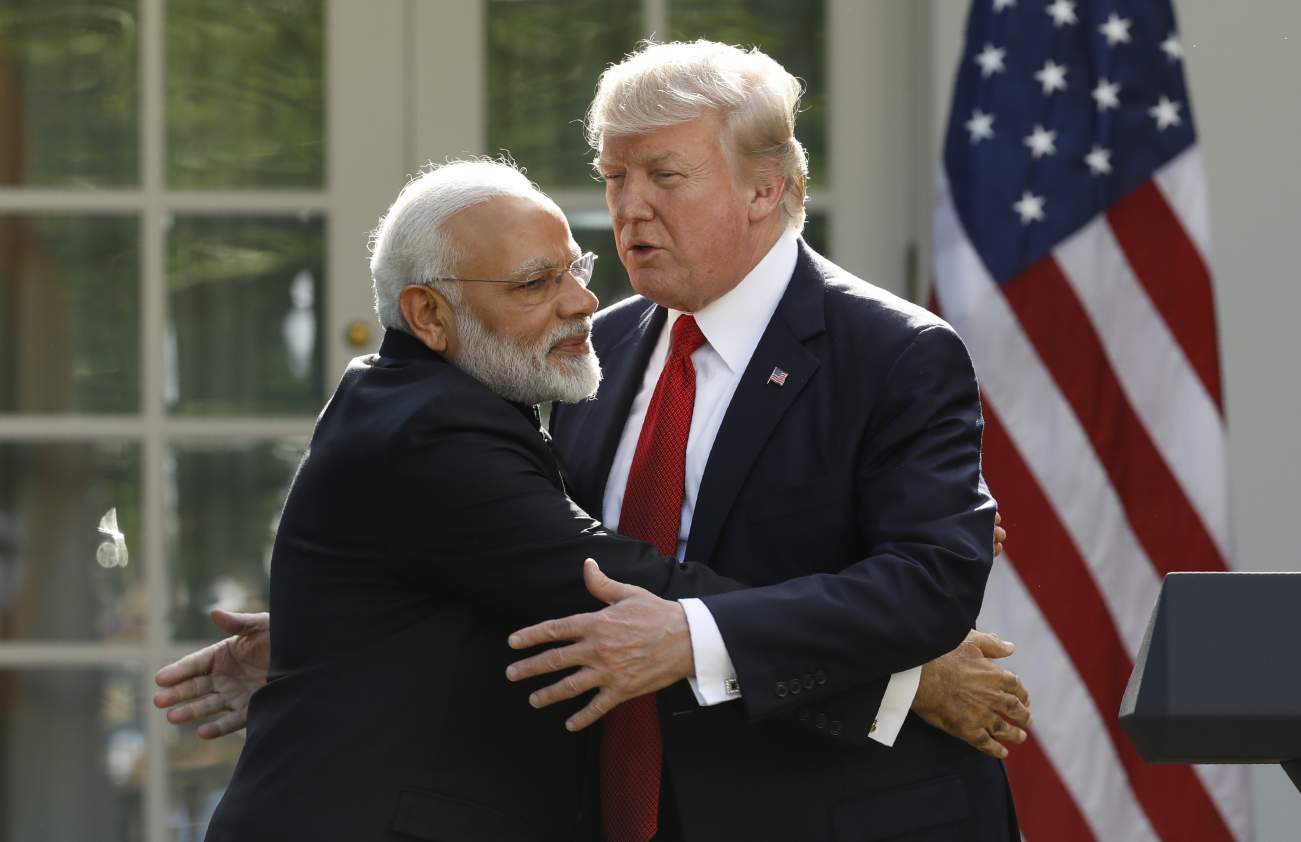by Hamza Shad
 As we approach the new date of the twice-postponed “2+2” dialogue between American and Indian cabinet officials, it is worth reflecting upon the current state of affairs of the U.S.-India strategic partnership. The 2005 civil nuclear agreement between the two countries was widely viewed as a pivotal moment for the beginning of close alignment. But recent events have been a mixed bag of positives and negatives, making it difficult to assess the future trajectory of the bilateral relationship. Initially after taking office, Donald Trump expressed affinity for India, and the Pentagon renamed the Pacific Command to the “ Indo-Pacific Command ,” giving greater centrality to India as a strategic partner and counter-balancer to China. New Delhi responded by increasing purchases of U.S. defense equipment and reviving the dormant “Quad” group with Japan, Australia, and the United States.
As we approach the new date of the twice-postponed “2+2” dialogue between American and Indian cabinet officials, it is worth reflecting upon the current state of affairs of the U.S.-India strategic partnership. The 2005 civil nuclear agreement between the two countries was widely viewed as a pivotal moment for the beginning of close alignment. But recent events have been a mixed bag of positives and negatives, making it difficult to assess the future trajectory of the bilateral relationship. Initially after taking office, Donald Trump expressed affinity for India, and the Pentagon renamed the Pacific Command to the “ Indo-Pacific Command ,” giving greater centrality to India as a strategic partner and counter-balancer to China. New Delhi responded by increasing purchases of U.S. defense equipment and reviving the dormant “Quad” group with Japan, Australia, and the United States.
On the other hand, there have lately been noticeable disagreements between the two countries, especially over trade and defense issues. The Trump administration announced tariffs on Indian steel and aluminum in March, to which India responded in June with the announcement of counter-tariffs on a wide assortment of American goods. Though these retaliatory tariffs have been delayed till September , they run the risk of further complicating U.S.-India cooperation.
Compounding the growing distance between Washington and New Delhi, the Trump administration seems to have deprioritized its relationship with India, due in part to greater preoccupation with conflicts in the Middle East and East Asia. The Trump administration’s increased engagement with Pakistan on the issue of Afghanistan may also come at the expense of Indo-U.S. ties, as Suhasini Haidar notes .
A July editorial in The Hindu reflecting on the strategic partnership even declared that “both capitals [are] now freely conceding that their interests are diverging” and that “[t]he clock is ticking on the relationship.” More recently, however, the United States took a step towards closer cooperation with India by granting it STA-1 status , thereby easing of sale of high-technology products to India.
Given this complex situation, how far has the U.S.-India strategic partnership come in the past thirteen or so years and where is it headed? There are two major schools of thought in the strategic community on the U.S.-India relationship: one which argues that it will move increasingly towards a strategic alliance, as predicted by architects of the U.S.-India civil nuclear agreement, and another camp which argues that India will align when convenient but maintain a great deal of strategic autonomy. When evaluating these opposing predictions, measurement has been a challenge.
Non-Partnership at the United Nations
One method of measurement that can serve as a proxy for strategic congruence between the United States and India is their voting alignment in the United Nations General Assembly (UNGA), the premier international institution. India’s voting records at the UNGA, when taken together with its close engagement with U.S. adversaries like Iran and Russia, suggest that it will likely maintain its strategic autonomy instead of bandwagoning with the countries that follow the United States’ lead on international affairs.
The lack of alignment between American and Indian interests can be observed systematically through the countries’ actions and voting behavior at the United Nations. India’s distance from U.S. foreign policies is reflected in its longstanding voting patterns in the UNGA, which have not changed significantly since the 2005 civil nuclear deal with India was crafted by the George W. Bush administration. Although that deal was widely viewed as a major concession to India and a pivotal moment in U.S.-India ties, it did not produce a corresponding change in Indian support for the United States at the UN.
India and the United States have historically been at odds in the UN, especially during the Cold War when India served as a leader of the Non-Aligned Movement. The end of the Cold War and demise of the Non-Alignment Movement have not appreciably closed divisions between New Delhi and Washington, even after the civil nuclear deal. Of the nearly 1000 resolutions that were passed between 2005 and 2017, the two countries concurred on 13 percent of resolutions (as measured by them voting the same way, or both being absent from the vote). Looking further back, Indo-U.S. voting alignment increased only slightly from 13 percent in 1990 to 17 percent in 2017. The extent of India’s alignment with the United States is below that of Russia, and around the same as that of China.

Figure 1: Voting alignment of select countries with the United States in the UNGA from 1990 to 2017.
The trends presented above do not reflect strategic congruence, and they hold even if we account for the special nature of the Arab-Israeli conflict as a major topic that the UN regularly votes on, on which the United States is largely at odds with India and most of the international community. If all resolutions on Israel and Palestine are removed, the U.S. overlap with India does not drastically change, with a total of 17 percent alignment from 2005–17. Thus, New Delhi also typically votes differently from the United States on important issues relating to arms, nuclear security, human rights, and development.
No comments:
Post a Comment